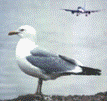Bird Strike Committee Proceedings

Bird Strike Committee-USA/Canada Joint Annual Meeting: 8th (2006)
Date of this Version
August 2006
Document Type
Article
Abstract
Ring-necked pheasant is an endemic subspecies of Taiwan. The main habitat of the bird is the grass lands at the low elevation in Taiwan. The population has been threatened due to the fast agricultural development and human disturbance at their habitats in Taiwan. However, the airfield of CCK Air Force Base has maintained a healthy pheasant population due to the large scale of grass lands without much human disturbances. Several bird strikes occurred at CCK air force base due to the foraging activities of ring-necked pheasant across the runway of the airfield. The main purpose of this study is to identify the space distribution of the bird at CCK Air Force Base and evaluate the impact of habitat .manipulation on the activities of ring-necked pheasant in order to design a bird strike proof measure for the airfield. We conducted an extensive avian distribution survey at CCK air force base from 2001 to 2003. A total of 208 pheasant was counted during the study period. Among them 102 were counted in 2001, 55 in 2002 and 103 in 2003. The low population observed in 2002 was due to the alteration of the habitat including tree cutting in 2002. The pheasant population recovered rapidly in 2003. Late spring is the most active season for the pheasant right after the breeding season. The grass mowing activities at CCK as well as the population activities of the ring-necked pheasant were monitored from March to December 2002. The pheasant population preferred the habitats along the open runway of the airfield to the habitats in the administrative areas. The grass mowing activities were classified as least, medium and high according to the intensity of the mowing frequency on the monthly basis. A transect line count method was used to monitored the population activity of the pheasant. Significantly higher population activities were found at the least grass mowing area than the medium and the intense mowing areas. Obviously the pheasant prefers a grass habitat with a certain height of grass for foraging and cover to avoid predation. Therefore, the grass management will play an important role on reducing the bird strike risk of ring-necked pheasant at CCK airfield.

